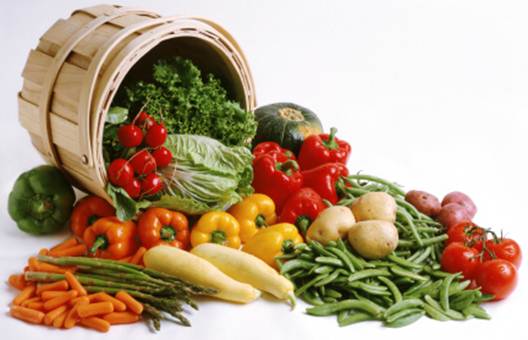What food should we eat?
Whatever
our Stone Age ancestors died of, it probably wasn’t acidosis or diabetes. These
ailments are rife in societies where diets are too high in acid-forming meat,
eggs, the wrong kind of fats, refined carbs, sugar, coffee, processed foods and
artificial substances. When the body is overloaded with acid-forming foods it’s
out of balance – whereas a balanced, slightly alkaline state helps to keep
illness at bay.

So,
although our bodies’ processes are in charge of regulating our pH, the part we
can control is the acid/ alkali balance of the food we eat. However, the taste
of a food isn’t necessarily an indication of its acid or alkaline-forming
tendency. For example, prunes contain aromatic organic acids that aren’t
metabolized in the body and so increase the acidity of body fluids, whereas the
ash of sharp-tasting citrus fruits is actually alkaline.
But there’s
no need to buy an acid/ alkali guide so that we can eliminate all acid-forming
foods. In facts, it would be dangerous to do so as they’re not all bad. Protein
is essential; it just has to be in the right proportion to other food groups
(For meat, use the palm of your hand as an estimate of portion size)
Balance and moderation
“Acidity is
a complex term and shouldn’t be confused with indigestion,” says Jenny Meyer,
of MME Dietitians in Gauteng. “While tweaking your diet can help, it’s
important not to adjust it to extremes that may compromise your health or
deprive you of nutrients. Eat good quality foods and apply the concepts of
balance and moderation. Cut out junk, drink sufficient water and eat a varied
diet with lots of fresh veg, salads, controlled portions of fresh fruit, high-fibre carbs, lean proteins and healthy, unsaturated fats”
If in
doubt, see a dietitian or healthcare practitioner who can guide you towards
fine-tuning a diet that will promote your optimum health, advises Meyer.
Alkaline vs Acidic Foods

Alkaline-forming
foods include green
tea, apple cider, oats, quinoa, wild rice, soya sauce, garlic, sprouts,
almonds, avocado, olives, beetroot, Brussels sprouts, pumpkin, bell peppers,
mushrooms, cauli-flower, cucumber, leafy green
vegetables, fresh coconut and most fruits, including citrus (see acid list for
acid-forming fruits)
Acid-forming
foods include meat,
fish, poultry, shellfish, eggs, cheese, bacon, brazil
nuts, walnuts, peanuts and peanut butter, all types of bread (especially wholewheat), cereal, crakers,
macaroni, spaghetti, noodles, crackers, corn, cranberries, plums, prunes, cakes
and cookies.
Should I be taking medication or supplements?
“The
essence of good nutrition is to keep your nutrient intake in balance and avoid
labeling food as “good” or “bad”, says Joburg-based
dietitian Zikhona Spelman.
“It’s when
we don’t practice the simple principle of “everything in moderation” that food
starts becoming an enemy to our bodies.
“Choosing
to embark on an acid/ alkaline diet or choosing to take supplements is not a
matter of “right or wrong”. It’s a case of whether the decision will have
positive or negative repercussions for your health and wellbeing in the long
run.
“The best
person to advise you is a qualifies, experienced
healthcare professional in the field of nutrition. Self-diagnosis and treatment
should never be an option.”

Your GP can
test your pH levels using a blood or urine sample.